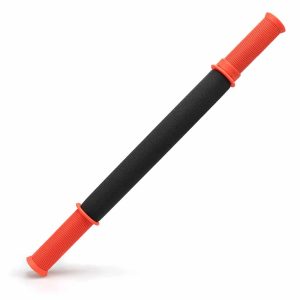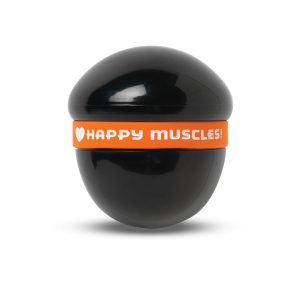Wrist Pain
Wrist pain is typically categorized by limited range-of-motion and weakness caused by Muscle knots in the forearm flexor and extensor muscles. The wrist has four basic functions: moving the hand towards the body, moving the hand away from the body, and moving to the left and to the right. Examples of movements of the wrist include knocking on a door and those movements used in sports such as hitting a tennis ball or swinging a golf club.

Causes
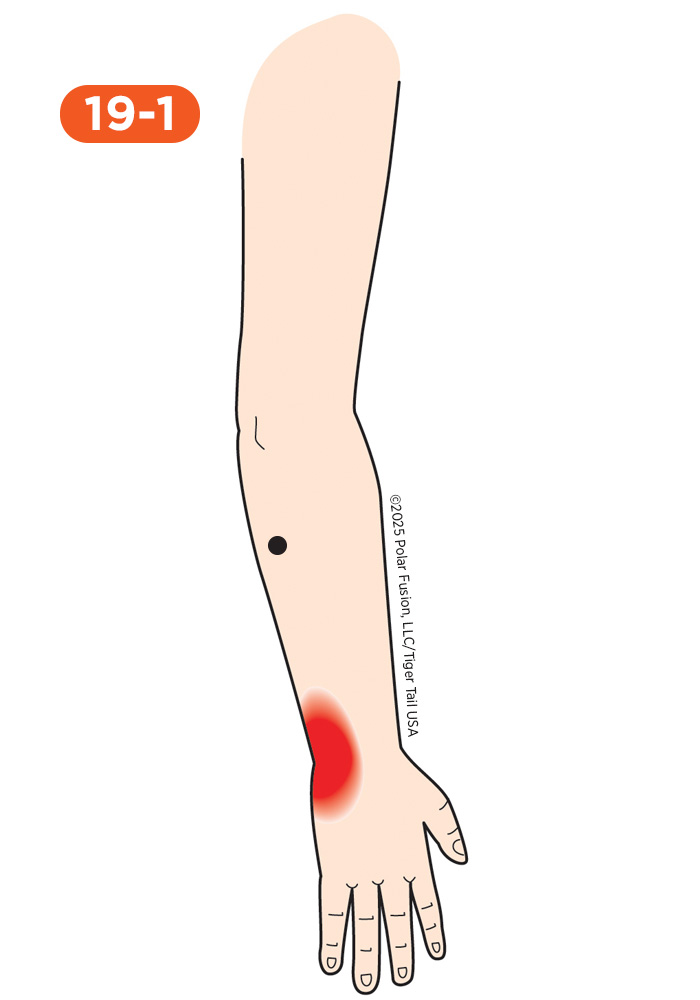
I Feel
Pain on Pinky Side of Wrist
That sharp, localized pain on the pinky side of your wrist is often caused by tight muscle knots in the muscle that helps extend and stabilize the wrist, the extensor carpi ulnaris. The discomfort usually concentrates right on the outer bump of the wrist and along the muscle, presenting as a sharp, pinching ache that worsens with rotation. You’ll notice the pain intensifies during activities that involve ulnar deviation or gripping, like turning a heavy key, wringing out a cloth, or hammering a nail. Because the extensor carpi radialis stabilizes the wrist on the pinky side, its knotting can easily mimic deeper issues, such as triangular fibrocartilage complex (TFCC) tears or tendinitis. The tendons and muscles along the outer back of the forearm are prone to pressure, which can leave your wrist feeling restricted and unstable during rotation.
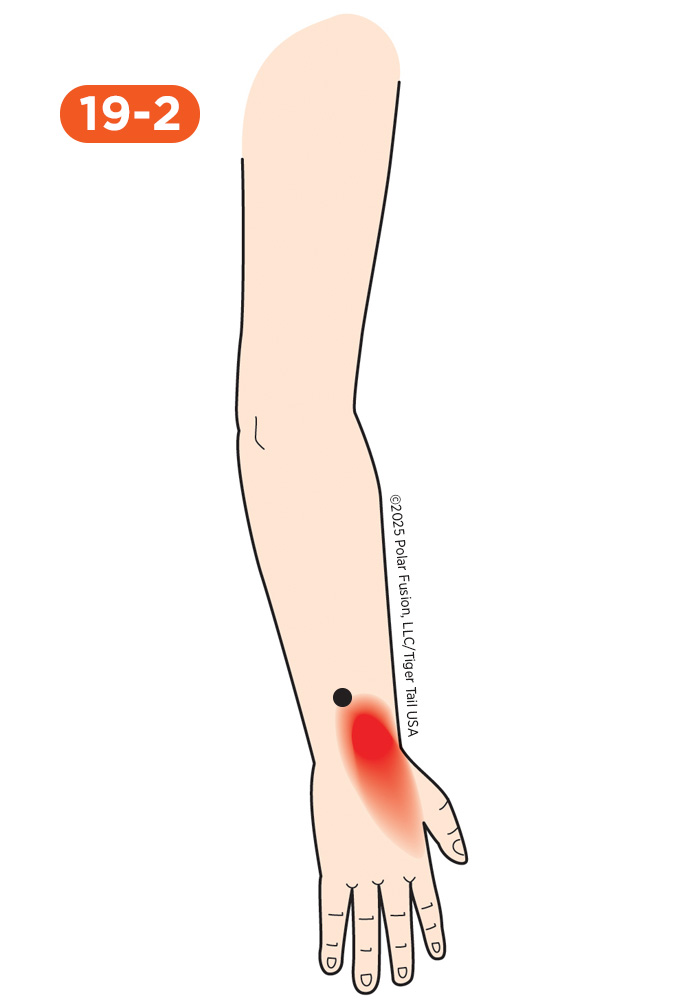
I Feel
Wrist Pain When Pointing
That strange wrist pain you feel when pointing or moving your index finger is often caused by tight muscle knots in the specific extensor that moves your index finger, the extensor indicis. The discomfort usually focuses along the back of the wrist and forearm, presenting as a sharp, focused ache that makes controlled movement difficult. You’ll find the pain gets significantly worse when you’re doing activities that require independent index finger movement, like typing quickly, using a trigger, or pointing or isolating that finger. Because the extensor indicis stabilizes the wrist when extending the index finger, its knotting can easily mimic deeper problems, such as tendonitis or nerve irritation, in the forearm. The tissue along the back of the forearm is extremely sensitive to pressure, and it leaves your index finger feeling restricted, limiting its dexterity.
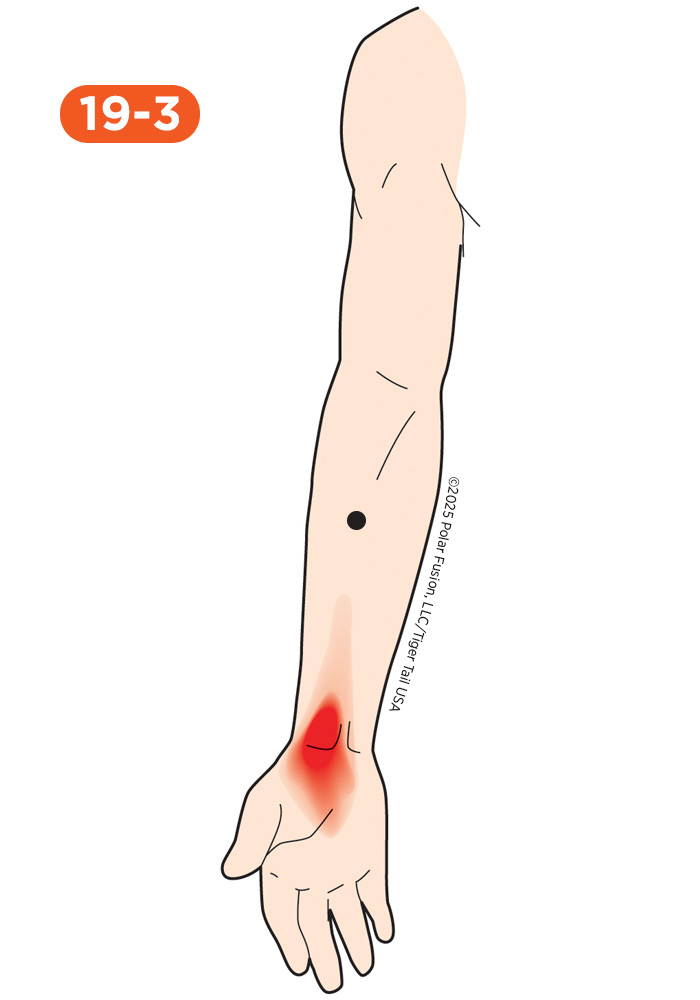
I Feel
Carpal Tunnel Syndrome
Suppose you’re experiencing tingling, numbness, or aching in your wrist and thumb-side fingers. In that case, the real problem might be coming from higher up in the forearm—specifically, from muscle knots in the flexor carpi radialis. This muscle runs along the front of your forearm and helps bend the wrist and stabilize it during gripping. The pain often feels like a dull ache or buzzing sensation that travels down into the wrist and palm, especially toward the thumb and index finger. It tends to flare up with repetitive typing, gripping objects like steering wheels or weights, and even poor posture while sitting or breathing shallowly. It can mimic classic carpal tunnel syndrome, causing nerve compression in the wrist, and may lead to stiffness or weakness when attempting to flex the wrist or grasp objects.

I Feel
Carpal Tunnel Syndrome
Pain, tingling, or numbness on the pinky side of your wrist and hand might seem like a wrist issue, but the real problem might be coming from muscle knots in the flexor carpi ulnaris. This muscle runs along the inner forearm and helps bend and stabilize the wrist, especially during side-to-side movements. The discomfort often feels like a deep, aching pull or burning sensation that travels down the forearm into the wrist and outer fingers. It’s often aggravated by activities such as leaning on your elbows, holding a phone for extended periods, or slouching while breathing shallowly. This pain can mimic ulnar nerve compression or carpal tunnel syndrome making it feel like a nerve issue in the wrist, and may lead to reduced grip strength or awkwardness when trying to move the wrist sideways.
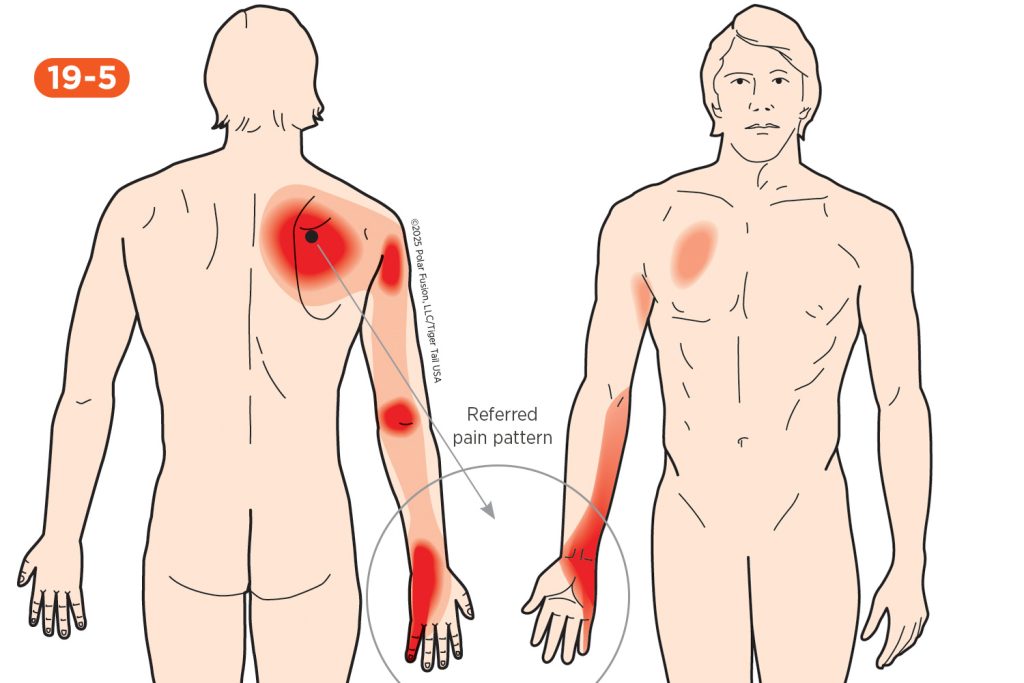
I Feel
Pinky Side Wrist Pain
Are you experiencing that frustrating pain on the pinky side of your wrist or a tingling sensation in your hand? If so, the real problem might be originating higher up—specifically from muscle knots in the deep back muscle, the serratus posterior superior. This muscle helps lift your ribs for breathing and lies directly beneath your upper shoulder blade. When it develops muscle knots, it can refer pain down the arm, often presenting as a sharp, pinching tingle that travels along the outer edge of your arm and into the little finger side of your hand. You might notice the pain worsens significantly when you’re doing activities like taking a deep, forced breath, reaching forward to lift something, or sleeping with your arm held overhead. Tension here can easily imitate deeper issues, such as ulnar nerve irritation or wrist tendonitis. The tissue under the upper shoulder blade is extremely sensitive to pressure, which can leave your wrist feeling restricted and limit fine motor control.
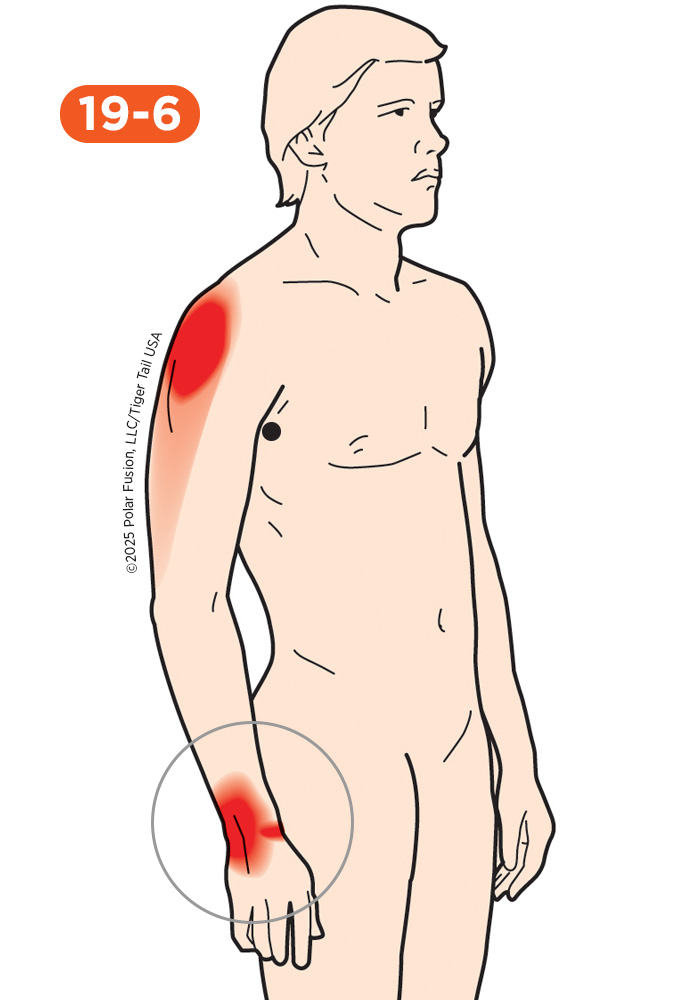
I Feel
Band of Pain Around the Wrist
That strange feeling of a band of pain wrapped around your wrist is often caused by pain from tight muscle knots in the largest and deepest rotator cuff muscle, the subscapularis. When it develops muscle knots, the discomfort usually centers deep inside the shoulder but is felt as a deep, dull ache that can travel all the way down your arm to circle the wrist. You’ll find the pain gets significantly worse when you’re doing forceful internal rotation, like throwing a ball, pushing a heavy door, or sleeping on your side. Because the subscapularis is responsible for stabilizing the shoulder, its chronic knotting can easily mimic deeper problems like tendinitis or ligament strain in the wrist itself. The muscle tissue deep on the front of the shoulder is extremely sensitive to pressure, and it leaves your entire arm feeling heavy and guarded, restricting wrist mobility.
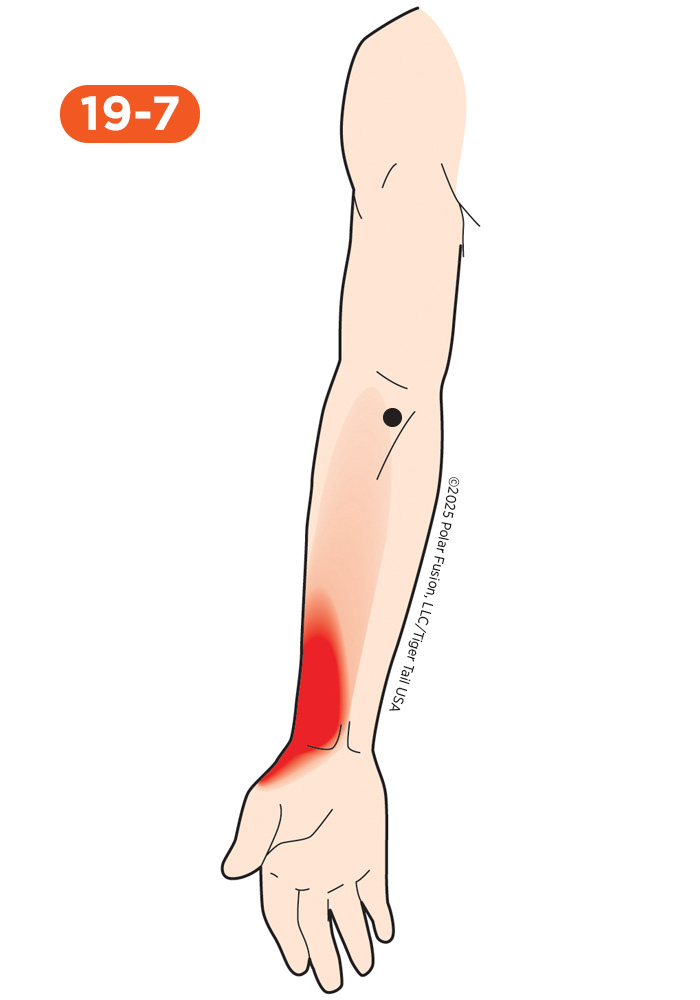
I Feel
Pain From the Forearm to the Wrist
If you’re experiencing a nagging pain that starts in your forearm and extends down toward your wrist, the actual issue may be originating higher up—in the pronator teres muscle. You’ll usually feel a deep, throbbing ache right in the middle of your forearm, and this discomfort often radiates down the forearm toward the wrist and thumb. This muscle’s primary function is to turn your palm face down (pronation), so you’ll notice the pain intensifies when you perform repetitive twisting motions, like using a screwdriver or gripping a wrench tightly. Because this muscle is so close to the median nerve, problems here can sometimes cause tingling or numbness, which can further complicate wrist pain, leaving your forearm feeling heavy, strained, and restricted during any rotational movement.

